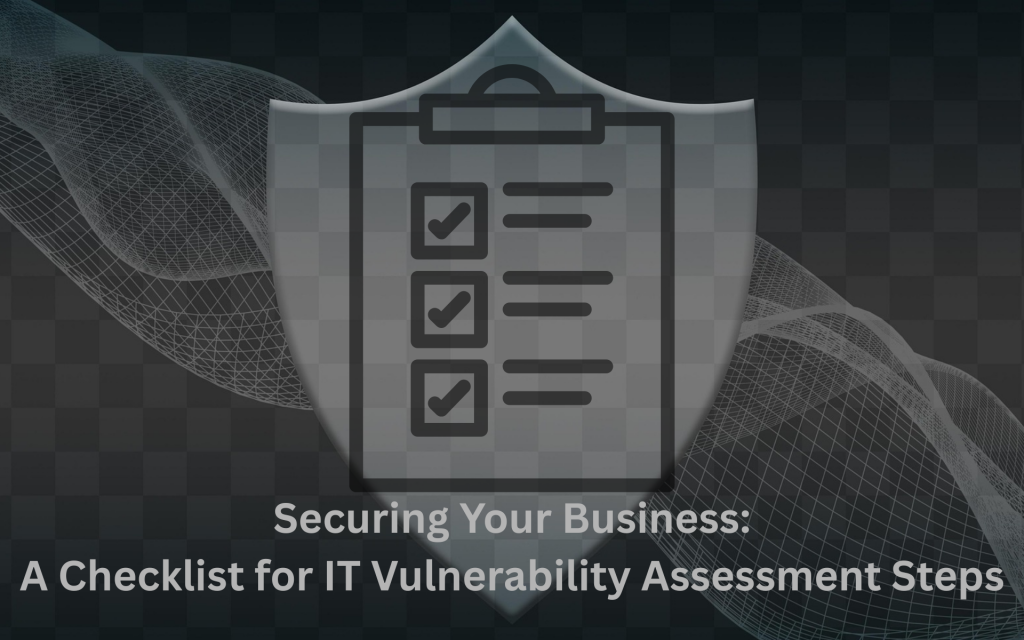No modern business of today can get by without technology. Although this is strongly encouraged, there are also risks that come with that dependency. Cybercriminals, for example, seek vulnerabilities in systems, networks, and processes. Hence, a single loophole can result in a full-on attack that results in catastrophic repercussions. This is why vulnerability assessment is important and what are the vulnerability assessment steps to get started. Here is a list of questions that you and your IT team need to go through and check off to identify and address weak points before cybercriminals can.

Vulnerability Assessment Steps
Vulnerability Assessment: Steps, Definition and Benefits
Vulnerability assessment is the identification of risks to your network system and the entire IT infrastructure. This also includes rating these risks to determine priorities in fortifying current defenses. This is especially important as security risks evolve daily. Hence, the risks will always be there, and new ones can arise with new exploits, outdated software, and human error.
A vulnerability assessment assists you in determining loopholes in your security and planning on what to address first. It also ensures regulation compliance, improves industrial standards, and decreases downtime. Simply put, it is a means to stay one step ahead of cyber crooks.
Step 1: Define Scope and Objectives
The first in vulnerability assessment steps is establishing boundaries. This means you and your managed IT partner select which systems, devices, or applications to test. This also adds servers, cloud services, mobile devices, and even workstations for the employees. In this stage, you get to ask: What are we guarding and why? By answering this, you get to set clear objectives. It also helps you not to miss important assets.
Step 2: Gather System Information
The next in the vulnerability assessment steps is to create a list of your IT environment. This list must include hardware and software in use, operation systems, and their versions, and lastly, the current security tools. The better your inventory, the better your evaluation. It should also be noted that old or out-of-date tools tend to contain vulnerabilities.
Step 3: Identify and Scan for Vulnerabilities
The third phase in the vulnerability assessment steps is the identification and scanning of vulnerabilities. These days, automated scanning tools are preferred to identify familiar problems. These tools indicate patches that have become outdated, misconfigurations, or weak links in your system. However, it should not stop there. Having a skilled and reliable managed IT services provider would also insist on manual checks. Oftentimes, they can detect what tools are lacking.
Step 4: Assess Risk Levels
Not every vulnerability is the same. Some are low risk; others will bring your business to its knees. Rank each weakness based on likelihood of exploitation, possible effect on operations and compliance requirements. This assists in prioritizing fixes such that you will fix the most urgent threats first.
Step 5: Implement Fixes and Patches
After determining the risks, the next phase in vulnerability assessment steps is to take action. This means the installation of patches, updating software, or reconfiguring firewalls, among many. Training employees in safe practices to reduce human errors is also imperative. In this stage, quick response is key. The more time a weakness remains open, the greater the danger.
Step 6: Document and Report Findings
Never forget to record your assessment. This must include documentation of what was tested, what vulnerabilities discovered, the fixes applied, and the actions that are still in progress. This record is crucial to both compliance and review in the future. It is also useful in demonstrating due diligence in the event of questions from regulators or partners.
Step 7: Repeat Regularly
In reality, there is no last in the vulnerability assessment steps. This is because cybersecurity is not a one-time job. Since new weaknesses arise daily and threats are changing, periodic evaluations–quarterly or at least twice a year- are necessary. Regular testing guarantees that you remain secure with your business in place.
A Quick Vulnerability Checklist
The following is a shortened list to make it easy to remember. Since vulnerability assessment is a cycle, make sure to keep this checklist to use at each time.
- Define scope and goals.
- Build an IT inventory.
- Scan for vulnerabilities
- Prioritize risks
- Apply fixes and patches.
- Document results
- Schedule regular reviews
How We Support at EB Solution
Here at EB Solution, we assist companies in Canada to secure their systems by performing comprehensive vulnerability assessments. Our team is passionate about this as we have witnessed how a single gap can be detrimental in the long run. That is why we pay attention to the actions that can be taken proactively. This is to detect the weak points in advance and make sure that they do not develop into a threat. Working with us, we scan and lead you afterward through the remediation. We ensure patches are implemented, compliance is fulfilled, and your team is aware of the process. All we want to do is to ensure that your business is safe and running smoothly.
With an MSP like us, you get:
- Availability of special tools and skills.
- 24/7 monitoring and feedback.
- Being proactive towards security, not proactive fixes.
Threats in cybersecurity are not going away soon. However, when you have the right process, you can remain prepared. With proper vulnerability assessment procedures, it is possible to identify vulnerabilities before attackers find them.
